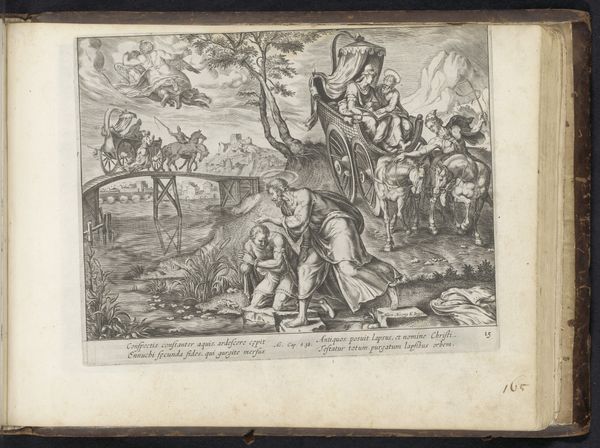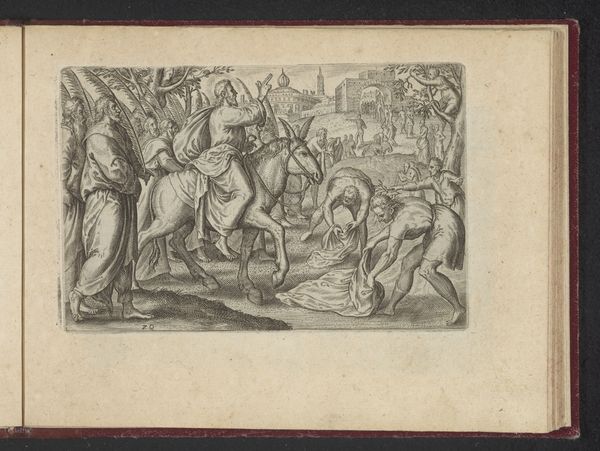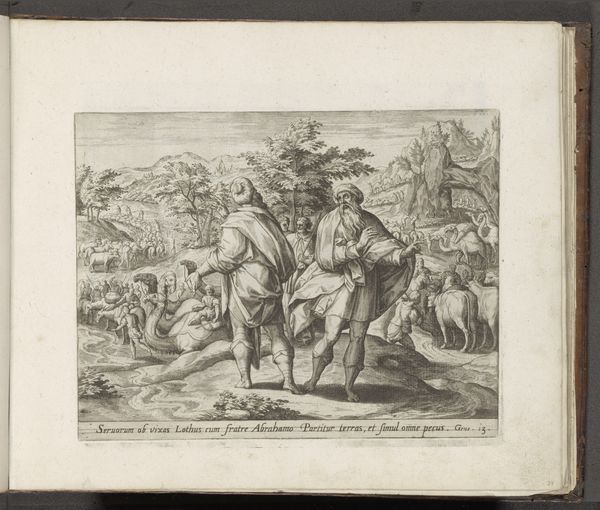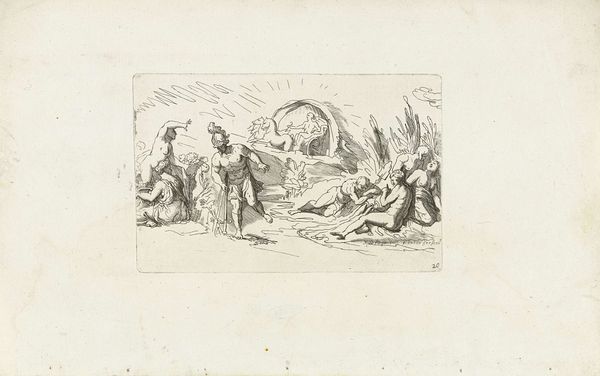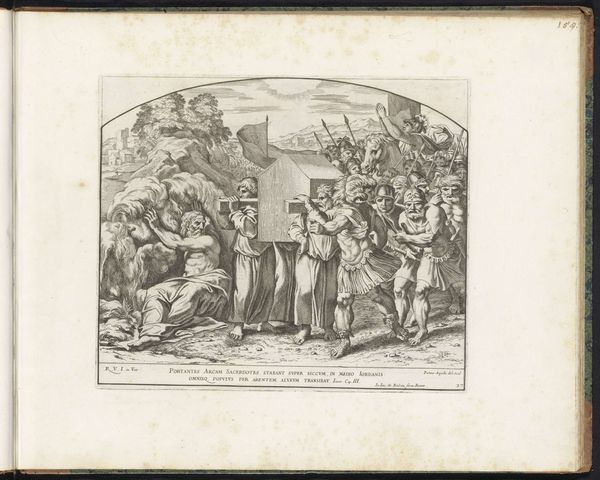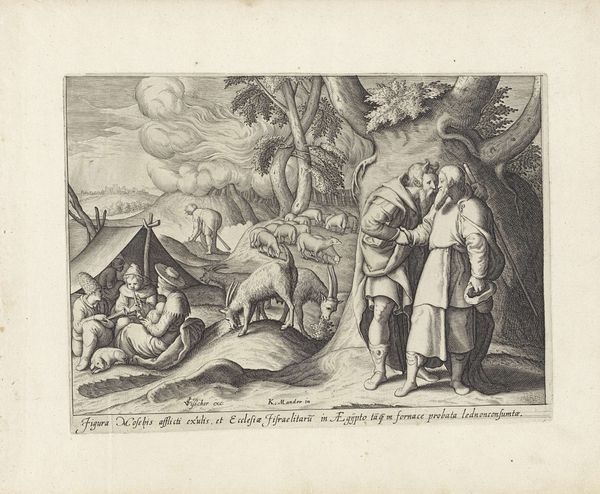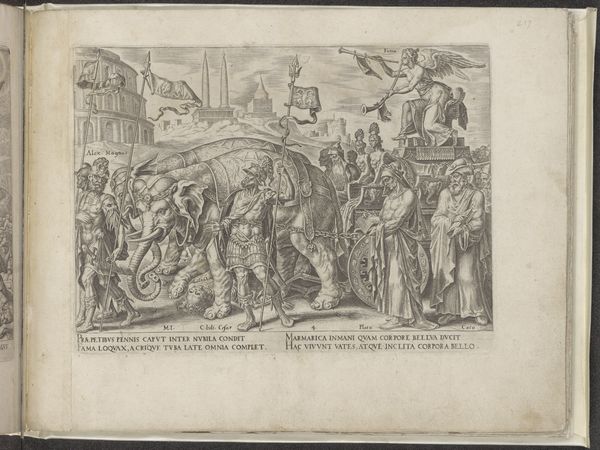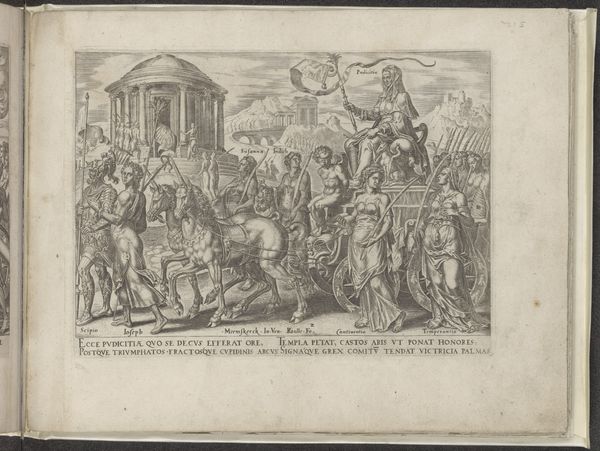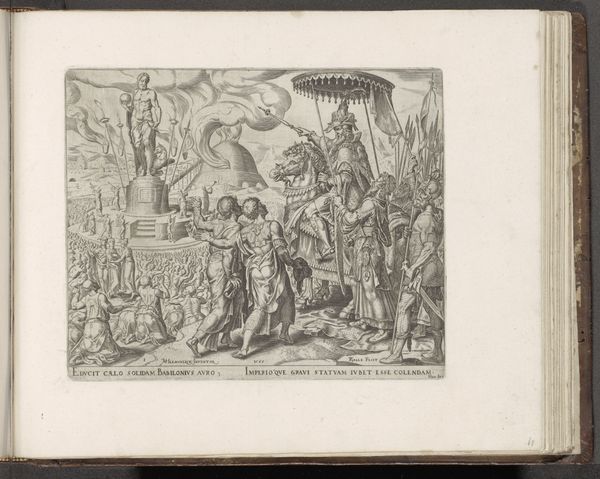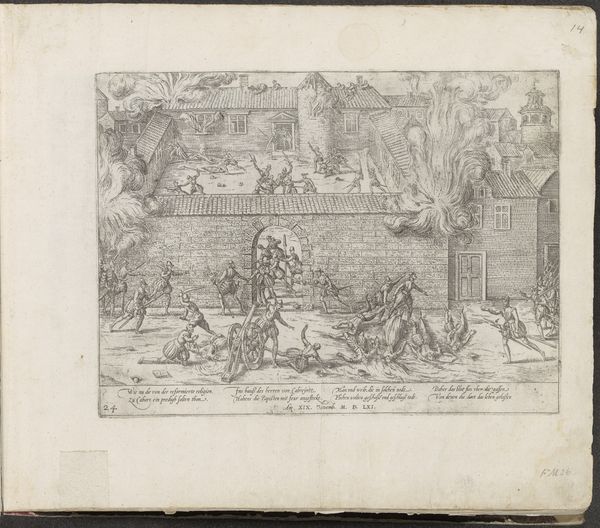
#
aged paper
#
light pencil work
#
pencil sketch
#
old engraving style
#
sketch book
#
personal sketchbook
#
ink drawing experimentation
#
pen-ink sketch
#
sketchbook drawing
#
sketchbook art
Dimensions: height 90 mm, width 177 mm
Copyright: Rijks Museum: Open Domain
Curator: This pen and ink sketch, dating from 1675 to 1735, is titled "Ter aarde stelling van lijken van slachtoffers van de pest" by Jan de Ridder, and depicts the burial of plague victims. Editor: My first thought is how stark and unsettling the scene is, even with the rather delicate rendering. There’s an almost detached quality to it, which I find particularly chilling. Curator: Right, the scene is constructed through very direct marks, which call attention to the artist’s hand. It’s not necessarily trying to create an illusionistic space but is foregrounding the physical process of making. You have to think about where Ridder would have acquired the materials to even do something like this. Editor: Absolutely. I see a confluence of themes. On one hand, the work underscores the physical toll of epidemics – specifically on vulnerable communities—, but it's also clearly commenting on themes of societal breakdown. Look how even in death, people's bodies were reduced to waste, prompting very necessary questions about who is discarded, and why? Curator: And how! And also who even gets to participate in funerary rituals. Notice, the work underscores this tension, it speaks volumes to what lengths people will go to in order to continue surviving and how material means may get in the way of spiritual conventions. Editor: The fact that the artist chose this subject also points to a form of quiet resistance. Consider the power dynamics at play. This intimate depiction provides agency to the disenfranchised in a time when discussions of public health and social disparities were mostly carried out by wealthy elites and patriarchal hierarchies. Curator: It really speaks to the relationship between the physical materials of artmaking and larger societal woes, doesn't it? And to that effect the work's aged paper really enhances the thematic experience by reminding one that nothing lasts forever. Editor: Exactly, this isn’t just an aesthetic exercise; it's a vital social document, even if created by somebody who wasn't suffering the direct consequences of poverty. The art exists as more than the paper and ink it was crafted from. Curator: And by that virtue, let's celebrate how artworks, like the tools the subjects use to transport bodies, allows us to dissect issues and create necessary commentary to allow for much needed change. Editor: Well, it certainly gives me food for thought about our own role as stewards of culture and how we participate in broader social dialogues!
Comments
No comments
Be the first to comment and join the conversation on the ultimate creative platform.
